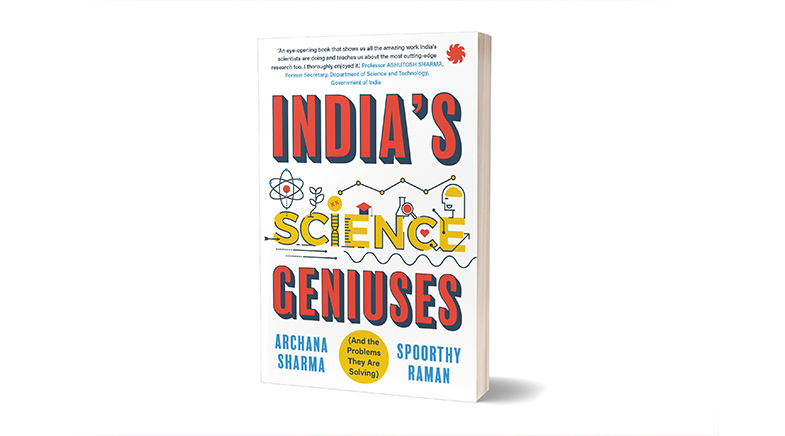Journeys in science
-
- from Shaastra :: vol 01 issue 04 :: Jul - Aug 2022

India's accomplishments as seen through the prism of 30 distinguished men and women of science.
Of the few dozen countries that gained independence soon after the Second World War, India has done exceedingly well to create a robust scientific infrastructure of its own. At the time of independence, only a handful of Indian institutions were doing research worthy of reckoning. However, several institutions of higher learning and industrial research, such as the Indian Institutes of Technology (IITs) and laboratories under the Council of Scientific and Industrial Research (CSIR), were established in the early years. Over time, they have grown to become world-class institutions of significance. Today, India is among the countries with the largest science and technology manpower. Just as many scientists and engineers of Indian origin serve in laboratories and universities abroad. In some ways, India offers a steady supply of scientific talent to the world.
India's Science Geniuses by Dr Archana Sharma, senior physicist at the CERN Laboratory, Geneva, and Spoorthy Raman, a science journalist, offers an insight into the quality of science in India. The book profiles 30 distinguished men and women of Indian science, almost all of whom were born in independent India and were therefore beneficiaries of the early investments made in science.
By its very nature, any such listing of top Indian scientists is bound to be subjective and far from complete. It would be easy to pick a number of equally eminent people of Indian science who do not figure in the book despite their achievements. Right at the outset, therefore, the authors make it clear that they have merely attempted to capture a representative diversity of scientists working in frontier areas of science in the broad categories of biology, chemistry and physics. That exercise is unexceptionable; one only wishes the publisher had not yielded to marketing-driven hyperbole in characterising the scientists, many of whom are mid-career professionals, as "geniuses"; their work did not need to be amped up thus.
There appears also to have been a conscious effort to showcase women in STEM disciplines: a third of the scientists profiled in the book are women even though the real world of science doesn't reflect those numbers. According to a 2020 United Nations report, women account for only 14% of scientists, engineers and technologists employed in Indian research institutions; the corresponding proportion globally is almost twice that. Evidently, the book's 'positive discrimination' in favour of women scientists, who faced harder challenges in their career trajectory, is intended to inspire young students.
NOT JUST FOR NERDS
The book is divided into 30 chapters, each dedicated to one scientist. The profiles, which are written in a manner that will appeal even to those not immersed in science, not only track the scientists' achievement and their personal journey, but additionally highlight the broader significance of their work. Particular care has been taken to flag the scientists’ accomplishments in areas other than science, which offer insights into their personalities and render them relatable.
For instance, the chapter on C.S. Unnikrishnan, former Professor of Physics at the Tata Institute of Fundamental Research, Mumbai, details his scientific exploits in foundational aspects of gravity and quantum mechanics, which found mention in the footnotes of the 'Scientific Background' on the Nobel Prize in Physics 2017. Beyond that, however, it also brings out Unnikrishnan's interest in Indian cinema, which prompted him to opt for bit roles in movies, apart from his mastery on the flute and the guitar. Many other scientists profiled are accomplished dancers, musicians and painters. Ayan Banerjee, a Professor of Physics at the Indian Institute of Science Education and Research Kolkata, dabbles in theatre as actor, director and playwright when he is not busy with his exploits with optical tweezers.

With one author (Sharma) in Switzerland and the other (Raman) in Canada, and the subjects working in different places in India, the sheer logistics of putting together a book such as this must have been incredibly complex. It is to their credit that they have produced a book that will appeal to anyone with an interest in Indian science. Given that many of those scientists profiled are mid-career scientists, they will surely have many more significant contributions to make.
There appears to have been a conscious effort to showcase women in STEM: a third of the scientists profiled are women.
The authors' narrative style is lucid and adequately frames the work of each scientist in a broader context. However, the introduction of boxes in each chapter interferes with the flow of reading. That apart, the book is a breezy read, which does adequate justice to the objective of showcasing the contributions of a section of Indian scientists across various disciplines.
Have a
story idea?
Tell us.
Do you have a recent research paper or an idea for a science/technology-themed article that you'd like to tell us about?
GET IN TOUCH














